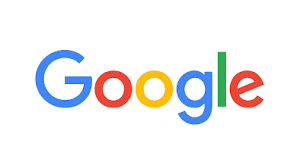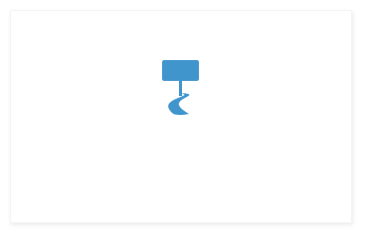Posted on March 23, 2016 by LocAdsAdmin No comments

Google AdWords
Google AdWords is a pay-per-click (PPC) advertising platform supplying businesses of any size with the ability to buy and integrate an ad into a person’s search results; Google notes that its online advertising platform is a cost-per-click (CPC) model but, generally speaking, the two phrases—PPC and CPC—are interchangeable.
With Google AdWords, you are able to reach people as they either search for words or phrases (i.e., “keywords”) or browse websites with themes related to your business. Your ad can appear on Google and its partner websites and you are charged only when a person clicks on your ad.
To better understand how AdWords works (and make the most of your advertising budget) it makes sense to review the following building blocks of an AdWords campaign:
- Keywords
- Placements
- Ad Rank
- Bids/Quality Score
Keywords
Keywords are words or phrases chosen by you that can trigger your ad to appear on search and other sites. For example, if you deliver fresh flowers, you could use “fresh flower delivery” as a long-tail keyword in your AdWords campaign. When someone searches Google using the phrase “fresh flower delivery,” or a similar term, your ad might appear next to Google search results; your ad can also appear on other websites in the Google Display Network (GDN) that are related to the delivery of fresh flowers.
When considering keywords, It is important to create lists that are relevant to your product or service. Using specific keywords (e.g., “fresh flower delivery” instead of “flowers”) increases the chance that your ad will appear to people who are most interested in your product or service.
Placements
Keywords can also trigger your ads to display on other sites across the Internet such as Google-owned properties like YouTube or Google’s partner sites like NYTimes.com. Google categorizes ads that appear on the GDN as “placements.” Google can automatically determine where your ads appear by matching your keywords to websites in the GDN. However, if you want more control over where your ads appear, you can pick specific placements yourself.
Ad Rank
If multiple advertisers use the same keyword to trigger their ads, or want their ads to appear on the same websites, Google uses Ad Rank to determine whose ads will appear, and in what order.
Your Ad Rank is based on a combination of the following:
- Your bid, or how much that you are willing to spend
- The quality of your ads and website
- Expected impact from your ad extensions and other ad formats
Bids/Quality Score
Your bid and ad quality can work slightly differently across different campaign types.
For instance, with a keyword-targeted ad on Google, and its search partners, your bid is based on your maximum cost-per-click (CPC) bid. That is, the maximum amount that you are willing to pay for each click on your ad (though the final amount that you are charged per click—your actual CPC—could end up being less).
Your ad quality is calculated based upon the components of Quality Score:
- Expected click-through rate
- Ad relevance
- Landing page experience (i.e., an optimized landing page with persuasive, relevant content and a clear call-to-action, tailored to specific search queries)
Measurement
Hundreds of thousands of small and medium-sized businesses are not measuring their website conversions today, says Google. Google continues to design tools to help users leverage their data to drive better marketing and advertising performance.
Here is a brief overview of several of Google’s measurement products:
AdWords Conversion Tracking
Conversion tracking can help you to see how effectively your ad-clicks lead to customer activity such as website purchases, phone calls, app downloads and newsletter sign-ups.
AdWords conversion tracking is a free tool that helps you understand how well your keywords, ads, ad groups, and campaigns are working for your business, allowing you to invest more wisely and help boost your return on investment (ROI).
Conversion tracking also lets you take advantage of advanced, flexible bid strategies such as target cost-per-acquisition (CPA) and target return on ad spend (ROAS)—tools that help you automatically optimize your campaigns according to your business goals.
Summarizing, then, conversion tracking helps you to see when ads lead to conversions via the following sources:
- Websites
- Track purchases and signups
- Apps
- Track Android app conversions
- Track iOS app conversions
- Phones
- Track calls from ads
- Track calls to a Google forwarding number on your website
- Track phone number clicks on a mobile website
- Imports
- Track offline conversions
Analytics
Google Analytics is a free product that lets you measure sales and conversions while providing insights into how visitors find and use your site. To benefit from Google Analytics, you will want to ensure that your Google AdWords account is properly linked to your Google Analytics account.
Smart Goals
As mentioned, a key metric for almost any business is conversions, also known as “that moment when users do the thing that you want them to do,” according to Google.
Another benefit to measuring conversions in your Adwords account is the ability to set a target cost per acquisition (CPA) as opposed to just setting a cost per click (CPC). If you are not measuring actual conversions, importing Smart Goals as conversions in Adwords allows you to set a target CPA. In this way, you are able to optimize your Adwords spend based on the likelihood of conversion as determined by Google’s model.
Pros
The Google Display Network (GDN) reaches 80 percent of Internet users in the US. WordStream backs up this claim by stating that Google AdWords is the single most popular pay-per-click (PPC) advertising system in the world.
Cons
According to an online article in Entrepreneur, clicks can be expensive—you will typically pay a higher cost per click (CPC) on AdWords when compared to other pay-per-click platforms. Also, grasping the nuances of AdWords may take time; if you do not fully understand the ins and outs of AdWords, you may pay higher CPCs.
You should take note that there is a limit on the number of characters that you are allowed to include in an ad. Specifically, it is 25 characters in a headline, 35 characters, each, in the next two lines of text, and 35 characters in the display URL.
Also, make sure that you set a timeframe for your campaign and remember to “turn off” your campaign when it is complete—there are stories of advertisers spending hundreds of thousands of dollars because they forgot to turn off their ads and/or campaigns.
ROI
To help measure the ROI of your AdWords campaign(s), you will need to track conversions—actions that you want your customers to take on your website after clicking your ad—such as a purchase, sign-up, or download.
According to Main Street ROI, you will want to get at least 100-200 clicks on a keyword to determine whether it converts for you.
For, example, if you are going to test ten keywords with a cost per click of $1.00, consider an initial budget of between $1,000.00 to $2,000.00. Most likely, you will wind up with a mix of “winning” and “losing” keywords, ads, and landing pages from this initial test. As you review your results, you will naturally keep what is working, drop what is not, and bring your campaign to profitability.
Earnings per click (EPC)
To calculate your earnings per click, multiply your conversion rate (the percentage of people who click your ad who become paying customers) by your customer value (the amount of money you earn, minus fulfillment costs, from each customer). For example, if a customer generates, on average, $100.00 and you have a conversion rate of 1 percent, then your EPC is $1.00.
Hint
An article posted online in Entrepreneur notes a list of best practices that you should consider to increase the ROI of your CPC (i.e., PPC) AdWords campaign:
1. Use long-tail keywords
Begin your AdWords campaign(s) with groups of five to ten long-tail keywords. Cross-check your list with Google’s Keyword Planner.
2. Send traffic directly to your homepage
Every visitor you secure via a PPC ad should wind up on a landing page that is as appealing and engaging as possible to his or her interests (versus directing visitors onto a homepage where they have to work to find the information they want, leading to higher bounce rates, missed conversion opportunities and unnecessary ad expenses).
3. Include negative keywords
Creating a list of “negative” keywords can help you to reach the most-interested customers, reduce your costs, and increase your ROI. For example, if you are an optometrist who sells glasses, you will want to prevent your ad from appearing to someone searching for webpages that contain terms like “wine glasses” and “drinking glasses.”
4. Test your ad campaigns
If you create more than one ad variation (which you should for split, or A/B, testing purposes), Google’s default is to serve up the ad it believes will perform better over time. While this might help your overall campaign ROI, it will not give you a fair assessment of an A/B test since the frequency of your ad-variation displays is not equal.
To prevent this from occurring, go to the “Settings” section of your AdWords account, then click on “Advanced Settings.” There, you will find four ad-rotation options:
- Optimize for Clicks
- Optimize for Conversions
- Rotate Evenly
- Rotate Indefinitely
When running an A/B ad test, select the “Rotate Indefinitely” option to provide more accurate data.



Comments